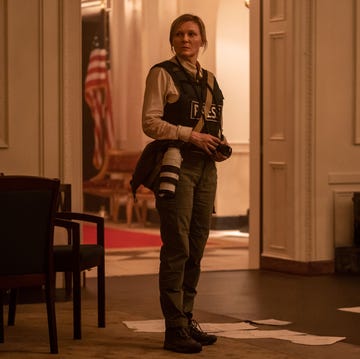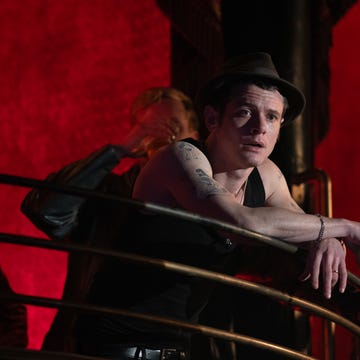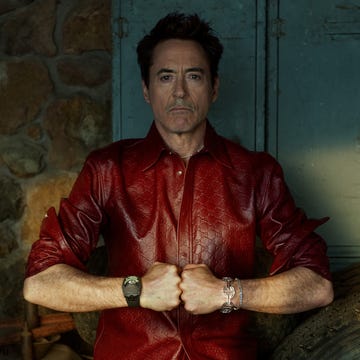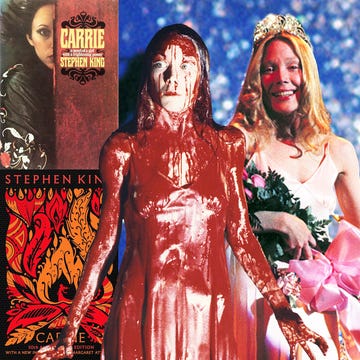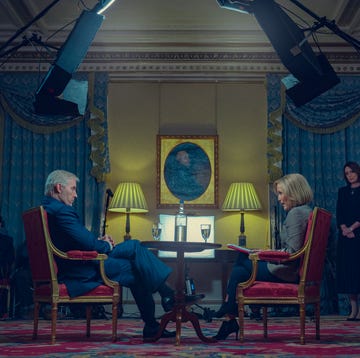Here is a sentence that would not be published in 2023: “At a time when too many movies are built from flat, TV-style visuals of people standing around talking, movies based on comic books represent one of the last best hopes for visionary filmmaking.” That is Roger Ebert, in the opening paragraph of his review of 1998’s Blade, the first film released by Marvel Studios and its first box office success (a $131 million worldwide haul would set a precedent with which cinema-goers are all too familiar with today). On its 25th anniversary, Blade is still notable for an exhilarating visual style, pulsing with indelible scenes that call back to a period of millennium era superhero films: Sam Raimi’s Spider-Man’s upside-down kiss, Christopher Nolan’s Batman rising from his pit. They simply don’t make them like they used to. But Blade’s influence on bloodsucking movies, an exhaustingly well-trodden genre in culture, cannot be overlooked, as vital as a rush of blood to a thirsty vampire’s head.
Some broad-brush swipes of Blade: the eponymous hero (played by Wesley Swipes, on imperial form) was born to a human who had been hunted by a vampire. That means that Blade himself is both human and vampire; as powerful as the monsters, but with some human conveniences, likes strolling in sunlight. The villain is Deacon Frost, a vampire played by a suitably scummy Stephen Dorff, who is trying to trigger a war between humans and vampires. Blade must stop him, and it’s to Dorff’s credit that Frost actually resembles a credible baddie. There is also a haematologist Karen (N’Bushe Wright) who becomes a sidekick for the hero. What Blade understands is that vampire lore is campy, fun, as subtle as an injection of garlic (which actually appears in this film). Once you accept this, as director Stephen Norrington does, there’s a lot of fun to, uh, sink your teeth into. Nightclubs which shower blood on its vampiric guests, fights that explode into underground tunnels, cyber-goth outfits that you’d find down a Camden backstreet. It’s a joy-ride throughout its two-hour, strobe-lit run.
And so began the replicas. 2003’s Underworld, which revolves around the battle between werewolves and vampires and stars a very game Kate Beckinsale, owes something to Blade’s visual styling but never reaches its inventiveness. The following year, Beckinsale starred in another vampire vehicle, Van Helsing, this time alongside Hugh Jackman. A string of films, either directly based on video games (Bloodrayne) or which feel like a video game (Ultraviolet), employ vampire tropes. These films and Blade’s two sequels (diminishing returns) never reached that first run, trading in an unembarrassed embrace of genre with something cheesier, less palatable, a little naff.
Vampires moved on. Sweden, who got a taste for vampires with the country’s first vampire film Frostbite in 2006, had a break-through with 2008’s Let the Right One In. That film, which was remade into Let Me In in America, is an acclaimed entry into the genre, both cool horror and romance: a totally different beast to Blade but equally memorable. Other entries slunk in, including Park Chan-wook’s Thirst, but most were engulfed by the teenage supernova that was Twilight. The 2008 adaptation of Stephenie Meyers’s phenomenon launched millions of impassioned fans as well as lifelong careers for its two leads, Kristen Stewart and Robert Pattinson. (There is little to link Twilight to Blade, two ends of a vampiric spectrum, though their subject matter certainly inspired two moody, atmospheric soundtracks.) The beasts also made their way to television, with HBO’s monstrous romp True Blood and last year’s Interview with the Vampire (an updated version of 1994’s film adaptation of Anne Rice’s novel of the same). Vampires are a useful conduit for a number of issues: race, romance, teenage misery.
Those projects rarely married subject matter with a visual style in such an influential way as Blade. None of them are half as fun (though many do not have the same action flick aspirations, of course). And so it seemed inevitable that Blade should be remade instead of beaten. A reinterpretation, set to be released in 2025, will star Oscar-winner Mahershala Ali and resident horror ingenue du jour Mia Goth. Yann Demange, whose credits include Top Boy and Dead Set, is directing. True Detective creator Nic Pizzolatto is a co-writer. That is enough to pique interest, though whether it can bring back that late ‘90s rush or visceral flair is another matter entirely. The genre, though, will remain undead.
You can watch ‘Blade’ on Apple TV+ or Amazon Prime Video
Henry Wong is a senior culture writer at Esquire, working across digital and print. He covers film, television, books, and art for the magazine, and also writes profiles.






